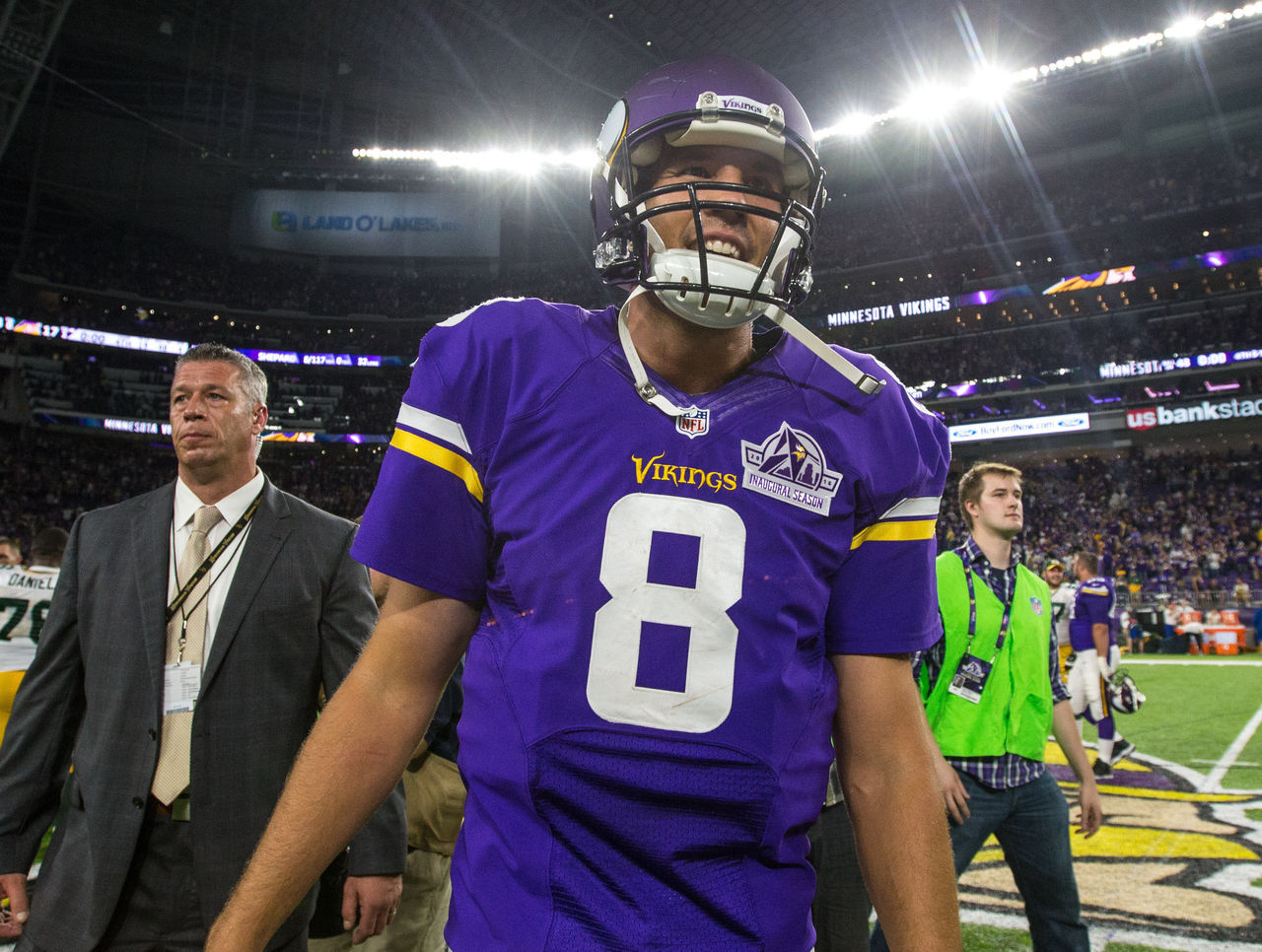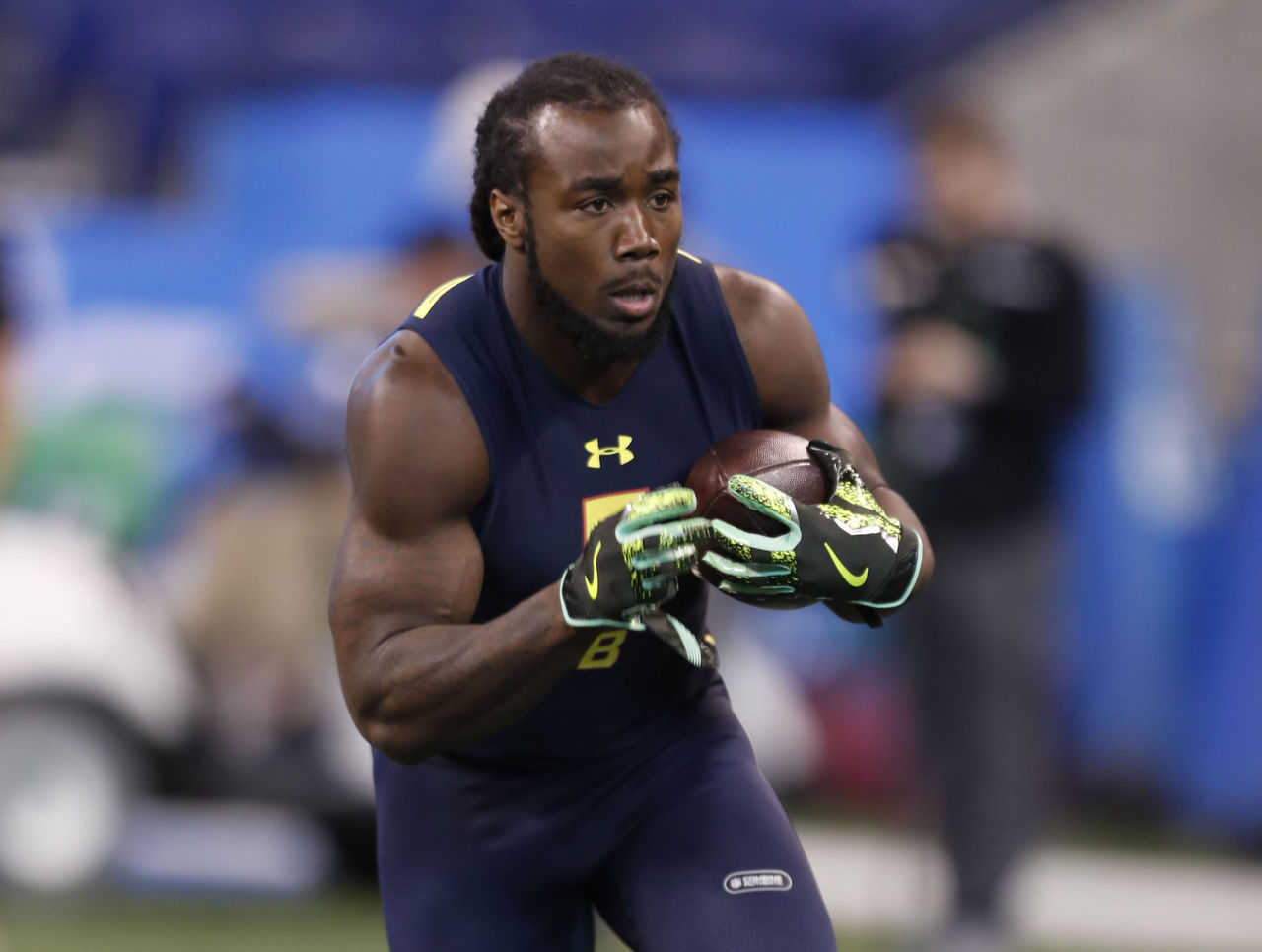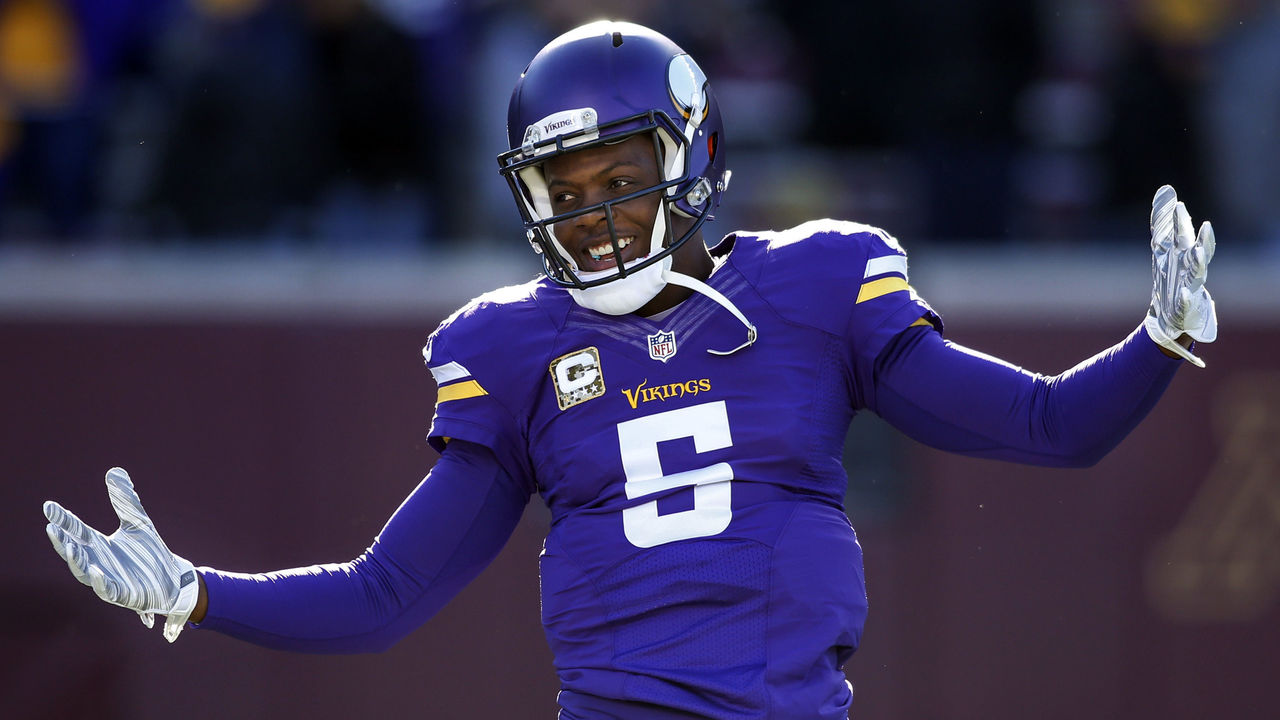Sage Rosenfels column: Vikings' QB situation is completely unsettled
Sage Rosenfels is a former 12-year NFL quarterback who writes, does radio, and podcasts about the NFL and college football.
The Minnesota Vikings have one of the league's more intriguing quarterback situations heading into the 2017 season.
A year ago at this time, the Vikings looked like they had a long-term solution to their quarterback position in Teddy Bridgewater. The play-caller was coming off a strong and consistent 2015 season which ended with a missed 27-yard field-goal attempt against the Seattle Seahawks in the playoffs. Bridgewater had grown from year one to year two, and looked ready to join the NFL elites as one of the league's top dozen quarterbacks.
All of this tragically changed during a meaningless practice just before the Vikings' preseason finale, a game in which Bridgewater wasn't even going to play. Bridgewater's knee exploded on a basic drop from center, causing any hopes of a Vikings push for a Super Bowl to explode as well.
General manager Rick Spielman, feeling that this Vikings team had the talent to go deep in the playoffs, made a desperate but necessary move to fix his quarterback problem by trading valuable draft picks to the Philadelphia Eagles for Sam Bradford. The Eagles had drafted Carson Wentz and had Chase Daniel as a capable backup, leaving Bradford as nothing more than a bargaining chip to use against other, more desperate NFL teams.
Luckily for Philadelphia, Bridgewater's knee gave out and the Eagles were heavily compensated for a player they didn't need.

Once Bradford arrived in Minnesota, he quickly learned Norv Turner's offense, and the Vikings started 5-0. Then things went south. Turner resigned midseason and was replaced by Bradford's former coach, Pat Shurmur. The season, which began with so much optimism, ended with a massive thud as the Vikings lost eight of their last 11 games.
I find the Minnesota quarterback situation interesting for a variety of reasons. First, all signs point to Bradford being the starter for the 2017 season. After setting an NFL record for completion percentage, and producing the league's sixth-highest QB rating, it would be easy to think Bradford had a remarkable season.
Having been traded to a new team on the brink of the season, I must say that putting up these types of numbers is exceptional for a quarterback with a short amount of time to learn the team's offensive system.
The second reason I find the Vikings' quarterback situation fascinating: The weaknesses in those same Bradford statistics. Yes, Bradford's completion percentage was extremely high, but he was also dead last in passing distance per throw. This is not yards per attempt, which includes yards after the catch.
The stat I'm concerned with is the actual distance from the line of scrimmage Bradford's passes sailed. It doesn't take a rocket scientist to figure out that if you throw more short passes than every other quarterback in the league, you should have the highest completion percentage - and Bradford did. The Vikings were near the bottom of the league in both big plays (32nd) and points (23rd). This must change.

How will they do it? The running game.
For a decade, the Vikings relied on future first-ballot Hall of Fame running back Adrian Peterson to carry the load. The Vikings' running- and passing-game schemes were based off Peterson's value as a runner.
Though much of the NFL had leaned toward throwing the ball more and running less, head coach Mike Zimmer had built a team to win the old-fashioned way. His defense had become one of the best in the league, Peterson looked to have plenty left in the tank, and Norv Turner liked to push the ball down the field with play-action concepts.
Then their entire team's strategy of success changed - not when Bridgewater went down, but when Peterson's meniscus was torn in Week 2.
The Vikings were last in the NFL rushing the football, which created all sorts of problems for Turner's offense. Opposing teams no longer were concerned with stopping the run, and instead kept their safeties deep to protect against the pass. The Vikings couldn't even run the ball against defensive schemes set up to allow easy rushing yards.
In an attempt to get back to their black-and-blue style of football, Spielman and Zimmer focused their offseason priorities on the running game. They signed two expensive offensive lineman, Riley Reiff and Mike Remmers, and added running back Latavius Murray in free agency. They also used their first pick, a second-rounder, on running back Dalvin Cook.
Talented players have been added. Now it's up to Shurmur and offensive line coach Tony Sparano to rebuild the Vikings' running game. This is the most important aspect of the entire Vikings team which needed an upgrade, and at least on paper, this should improve.

If the Vikings can find a running game in 2017, Shurmur will have a much easier time designing and calling plays to throw the ball down the field. He would face more 2nd-and-medium or 3rd-and-short situations. This brings a defense's safeties closer to the line of scrimmage, thus allowing the receivers favorable matchups on the outside.
Running the football also helps the offensive line in the passing game, specifically the play-action concepts. If a defense is reacting to initial run action by the offensive line, running backs, and quarterback, they can't rush the passer with the same effectiveness as they can against an offense which relies only on the drop-back passing game.
This may lower Bradford's completion rate and quarterback rating, but this offense desperately needs to make more big plays. Too many times in 2016 the Vikings completed passes which didn't make first downs, forcing them to punt. As an example, Matt Ryan connected on 22 fewer passes than Bradford last year, but ended the season with 41 more first-down completions.
First-down completions are one of those unheralded quarterback stats - but are way more important than overall completion percentage.
Also, Bradford is simply not a quarterback who can buy time in or out of the pocket to complete deep throws. He is not a playmaker, but rather a very accurate traditional pocket passer. On the spectrum of NFL quarterbacks, he is the opposite of players such as Russell Wilson or Aaron Rodgers, who scramble to produce positive passing yards down the field.
Bradford is an excellent "executor," so a rushing and play-action offense would significantly improve his ability to make big plays.

Finally, there is the issue of Bridgewater. The Vikings are taking a "wait-and-see" approach to his recovery. Immediately after the injury, rumors began to spread that he could miss both the 2016 and 2017 seasons. While nobody knows if Bridgewater's repaired knee will be ready for this coming campaign, he has been taking part in the individual drills during the OTAs at Winter Park.
I am no orthopedic surgeon - nor did I sleep in a Holiday Inn Express last night - but based off the video I've seen of his drops, Bridgewater still has a long way to go. To the average fan, Bridgewater's movement from center makes it appear as if he's near 100 percent; he's smooth, and doesn't look to be favoring his knee. From my standpoint, the concern is the power in his legs and his ability to drop the speed and energy necessary to play the position.
Also, one of Bridgewater's greatest strengths is his ability to avoid the rush; he has had to do plenty of this during his short career. If he can't scramble like he did before the injury, Bridgewater is less effective and opens himself up to a greater possibility of injury. If you compare the two quarterbacks, and take away Bridgewater's scrambling ability, Bradford is the better pocket passer.
Complicating matters is Bridgewater's contract. The Vikings elected not to exercise his fifth-year option - not because they don't like him, but because they will probably get an additional year at a much cheaper price. If he is placed on the PUP list, something which the team controls, his contract would be "tolled." Basically, the Vikings would get Bridgewater for an incredibly cheap $1.34 million in 2018.
This will undoubtedly heat up, and lawyers will be involved. I wouldn't be surprised to hear Bridgewater, or his representatives, publicly say that they believe he is healthy to begin the 2017 season on time. Teddy and his representatives would love to be free agents after 2017 and test the market.
All is fairly quiet now, but this is a story waiting to explode.
The quarterback picture isn't crystal clear for the Vikings this year. All signs point to Bradford as the starter. Bridgewater could be healthy by camp and beat out Bradford. He could also start the year as the backup. There is a good chance Bridgewater could be placed on the PUP. His knee could be so bad that he may be out all season. It is too early to tell, but who will end up being the quarterback in Minnesota is murky at best.

What is even more unclear is the quarterback situation for the Vikings after 2017. Currently, they have no quarterback under contract for 2018 despite having two legitimate starters on their roster. Though, how the next seven months unfold will surely clear up the matter. If Bradford plays well, he could be signed to an extension. Bridgewater may or may not be a free agent. The team could move on from both and look at drafting another signal-caller.
There are question marks all over the place.
The one thing we do know is that the Vikings have one of the more unsettled quarterback situations as we get closer to training camp. The team has taken the necessary steps to improve its weaknesses of last year, but the cloud settling over the quarterback room will be important to watch. As they say, "If you have two quarterbacks you have no quarterbacks."
Both Bradford and Bridgewater are well-liked in Minnesota, but to finally bring a Lombardi Trophy to The North, one of them needs to be the quarterback that everybody loves.
(Photos courtesy: Action Images)